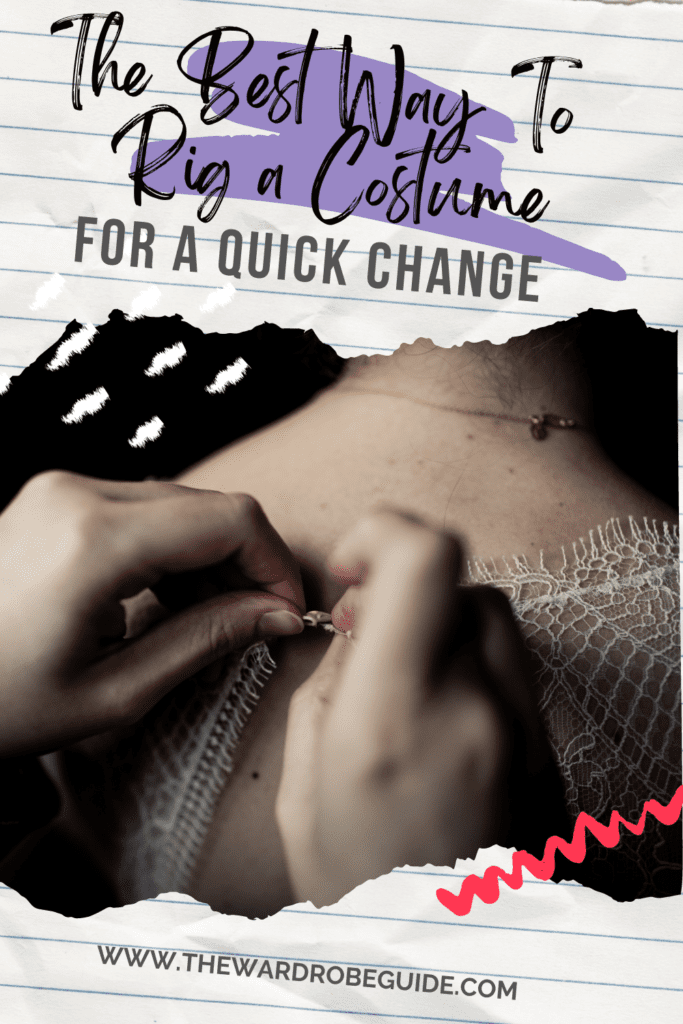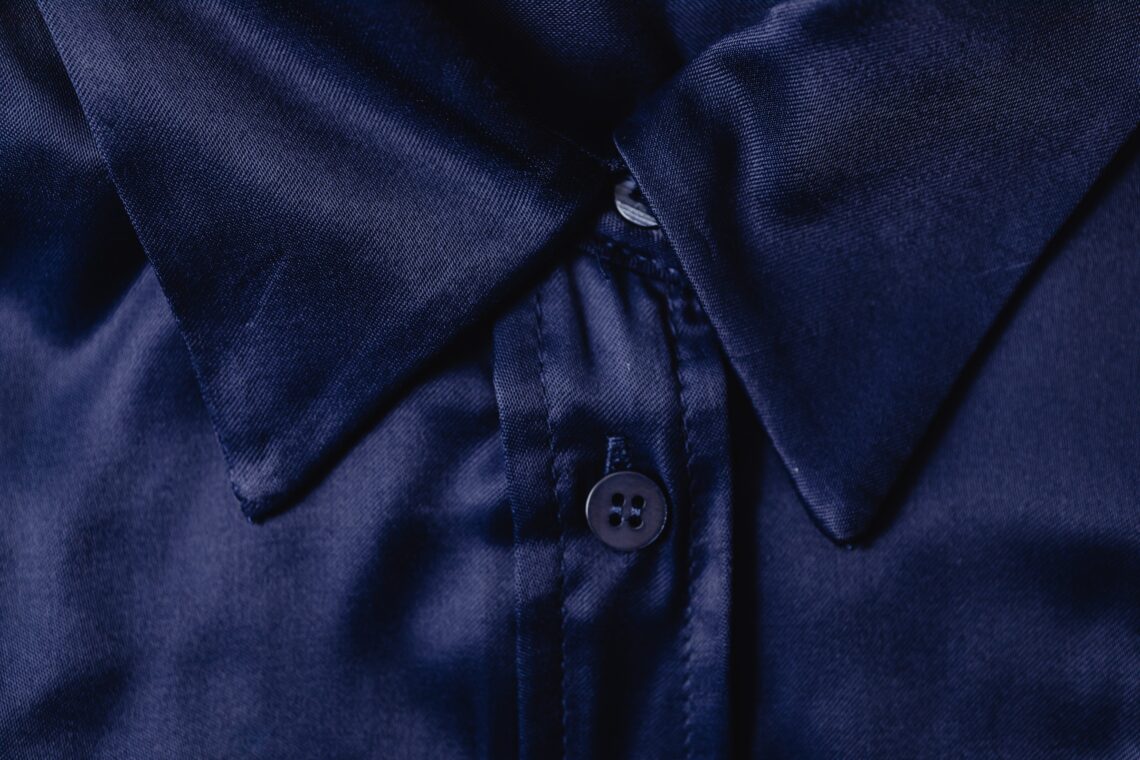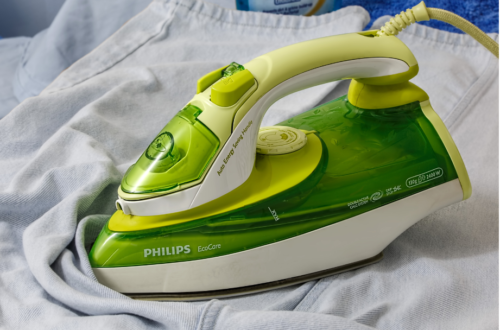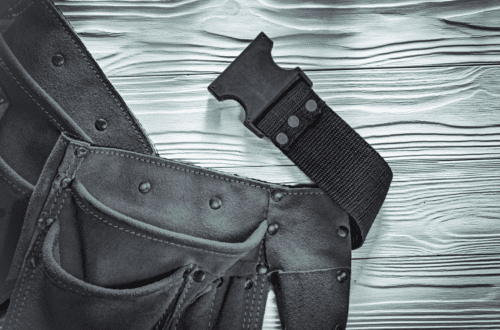There are many different ways a wardrobe department might go about quick rigging a costume. The best way to talk through these techniques is to break them down to the basics and work them up from there. So first, let’s talk about the basic costume quick rigging closures that may be used to optimize a garment for a quick change.
Click on each closure for a more in-depth look! (Coming Soon)
Why Might You Quick Rig a Costume?
While there are many reasons why someone might need to rig a costume, generally, quick rigging a costume has to do with the amount of time an actor has (or doesn’t have) to get from one look to another over the duration of the show.
What constitutes a “quick change” really varies from theatre to theatre, depending on the space you have for the change to take place. It even depends on the actor. If you have an actor who is more nervous about changing their clothes and getting back on stage in time, a 5-minute change could be considered “quick”. However, with other actors, they could feel completely comfortable with only 3 minutes to change their costumes. A general rule of thumb when in tech for a new show, treat any change under 3 minutes long as a quick change when planning out your show. Then, when you approach the change in the tech process, you can talk over it with you actor that is involved, and see how they feel about it, and the tools or support they think they’ll need to make the change happen.
Sometimes, the quick rigging needs for a change also depend on the dresser assigned to the change, and their comfort or experience level.
A general rule of thumb is, when in tech for a new show, treat any change under 3 minutes long as a quick change.
How To Choose Which Costume Quick Rigging Closure to Use?
There are many factors that might influence the best costume quick rigging closures to pick for a quick change. However, some things you might need to take into consideration are:
- If a Dresser is present for the change.
- How many times the change has to happen
- Exactly how fast the change is. (There is a huge difference even between a 15-second change and a 30-second change)
- Is the change a quick in? A quick out? Or both?
- How often the costume needs to be washed?
- Preferences of the actor/dresser/wardrobe supervisor.
Who Gets to Choose The Quick Rigging Closure For a Costume?
Typically, the way in which a specific costume is quick rigged is decided by a conversation between the actor who wears the costume, the dresser who is involved in the change, and the wardrobe supervisor. Sometimes, If the change proves to be really tricky, the conversation might also include the show’s stitcher.
On the Broadway/Off-Broadway level, the Costume Designer typically isn’t involved in the conversation to quick rig a piece, unless, of course, it alters how the garment looks on stage.
What Closures Aren’t Optimized for Quick Changes?
There are a number of closures you probably don’t want to introduce into a quick change, as they might be hard to find or see in the dark, or they might require the person fastening the closure to slow down in some way. Examples of these non-quick change-friendly closures might be:
- Hook and Eyes– Especially the smaller-sized hook and eyes. Hooks might get stuck on a mic cord, in fishnet stockings, or on a wig, and generally open up the possibility of error in the Quick Change. They also are sometimes hard to find or hook and can slow down a change. These shouldn’t always be discounted though– sometimes they are just what you need to help hold a zipper together to zip up or keep up during a heavy dance number.
- Buttons– Typically, if a change is going to be a little speedy, the buttons will be the first thing to be quick rigged. Generally, this is because it is super easy to make a fake button with a snap or velcro, and if a dresser is assisting with the change, it is typically more difficult for a dresser to do a button than one of the common quick rig closures.
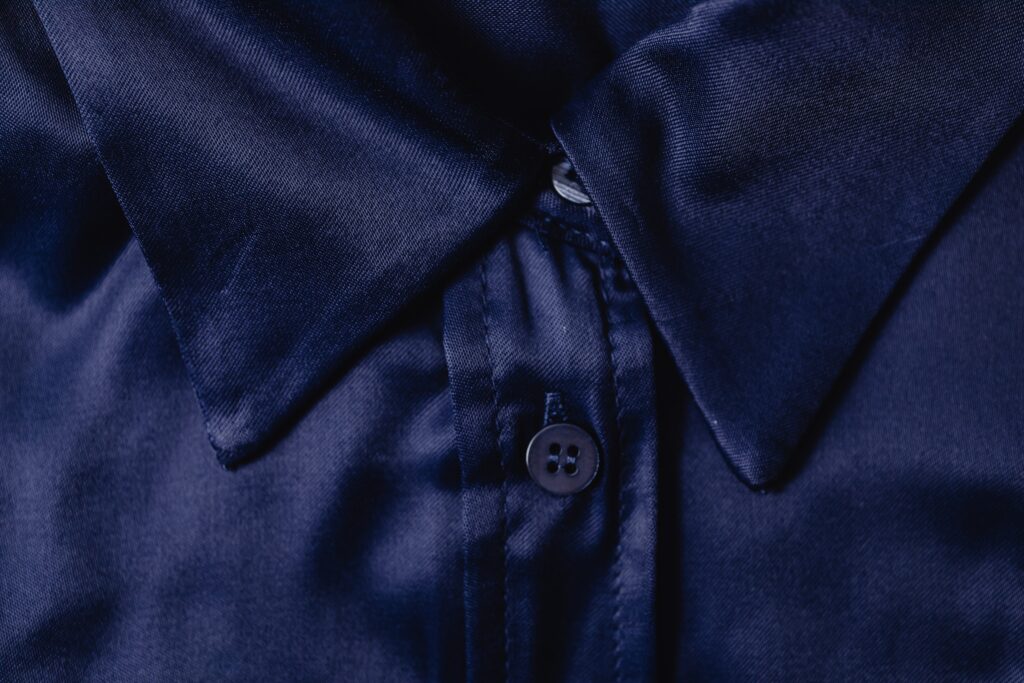
List of Common Costume Quick Rigging Closures
Now that we have talked about why you might want to quick rig a closure, as well as the closures you might not want in a quick change, let’s talk about the extremely quick-change-friendly closures. As with most wardrobe rules, even the following common quick-change closures might have instances where they aren’t appropriate for the garment at hand.
With each of these picks, we will do our best to go through the general pros and cons.
Also, check out our separate page on each closure for a more in-depth look! (coming soon)
Snaps
Snaps are an extremely common quick change closure. It is unclear if there is a single show on Broadway that doesn’t have at least one snap-rigged dress shirt. Snaps are fairly low maintenance, and they come in a variety of sizes and colors. Frequently, the type of snap you will find backstage are sew-on snaps.
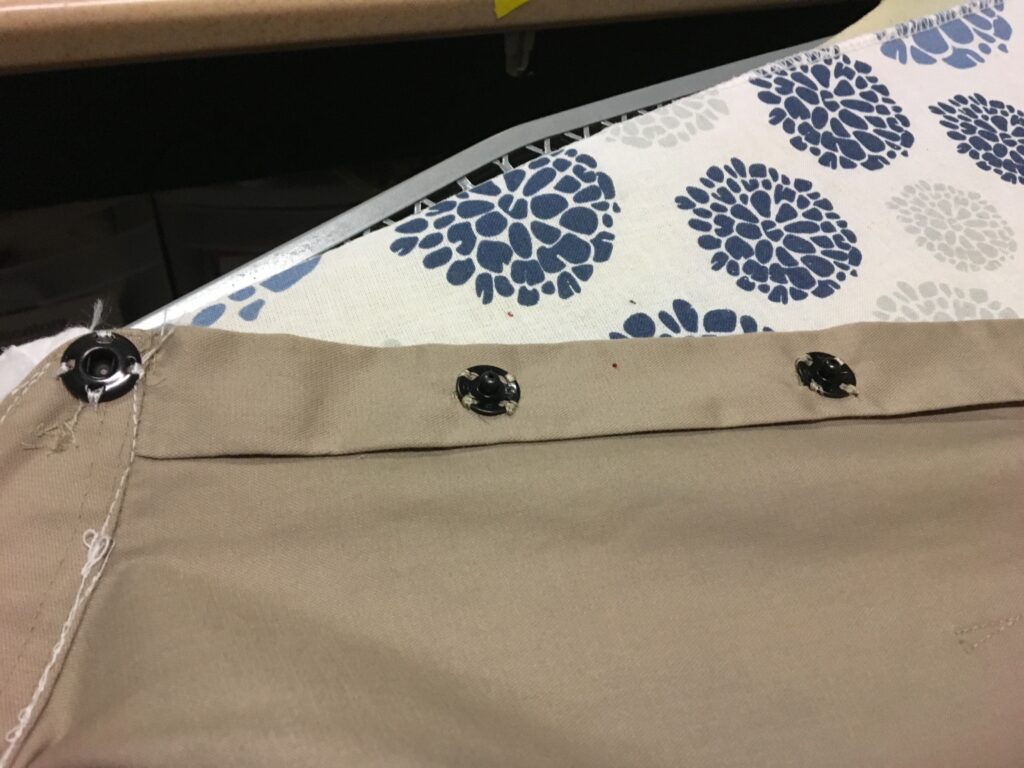
Pros
-Easy to put on/ Hand stitching only
-Silent to get in and out of them
-Many Sizes/colors
Cons
-Can be difficult to match up quickly
-Can be hard to match up perfectly in a change
-Sometimes be too strong for certain fabrics.
Zippers
Zippers are very versatile quick rigging closures for costumes. Not only can you add a zipper to the back of almost any dress (to avoid having to place the dress over a wig, perhaps), but you can also add them to the back of a corset, so it doesn’t need to be laced/unlaced. Another way to quick rig with a zip is to make a suit “jumpsuit” (more on that later).
Pros
-Extremely fast
-Easy to find quickly in the dark.
-Can hold more tension than other options without busting open.
Cons
-A higher chance that the zipper could break in a change.
-Certain zippers can be very fragile
-It could be hard to rig a piece temporarily with a zipper if the costume is rented.
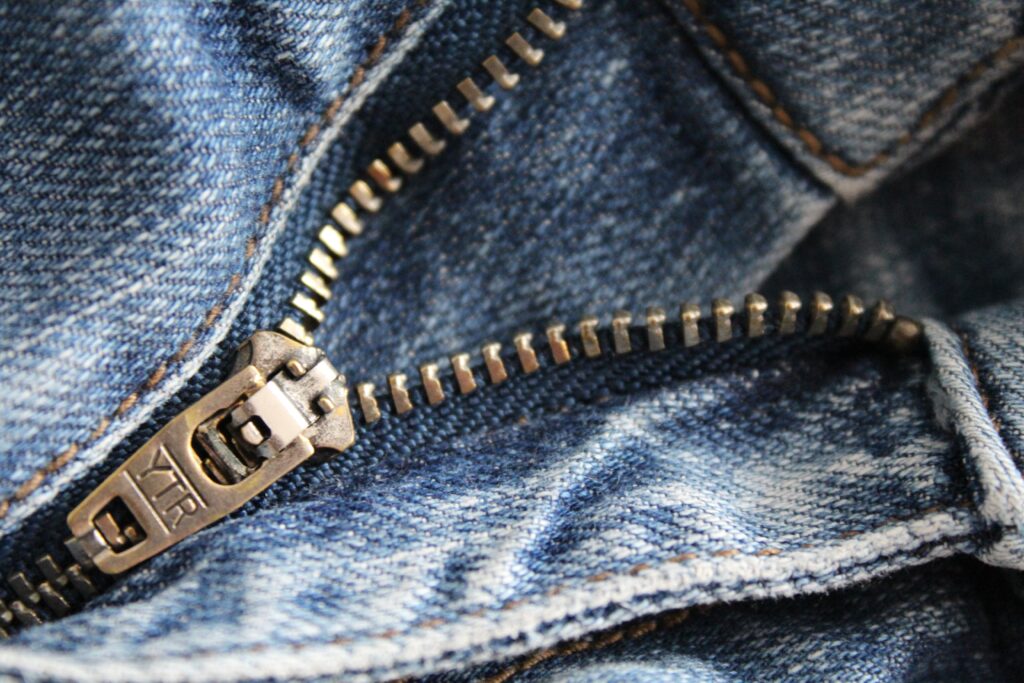
Elastic
Elastic can be extremely helpful for pants, shoes, as well as many “secondary closures” such as cuffs, or calf buttons on breeches. There are a variety of types, sizes, and colors. Once it’s added to a garment, the dresser generally does not need to bother with that specific closure during an active quick change.
Pros
-Extremely fast
-Can be used on hats and shoes.
-Can also help the costume fit better in certain circumstances.
– Easy to wash
Cons
-Sometimes stretches out over a long run.
-Will probably require some machine sewing.
-Can’t really be used for dress shirt CF closures.
Velcro
There tend to be very strong opinions on velcro in the wardrobe community. On one hand, it does really speed up a change and requires less accuracy than snaps might. However, it could ruin certain fabrics, and it can be challenging to match them up perfectly. Typically, velcro tends to be used sparingly on garments.
Pros
-Extremely fast
-Less accuracy is required to match up
-Easy for non-dressers to do on their own
Cons
-Could be scratchy against someone’s skin
-The hook side could ruin any fabrics around them by rubbing against them while on the rack, on the body, or in the wash.
-Requires some time to put it on- frequently, one side needs to be hand stitched.
-Can be difficult to get matched up perfectly so the garment doesn’t have “bubbles”
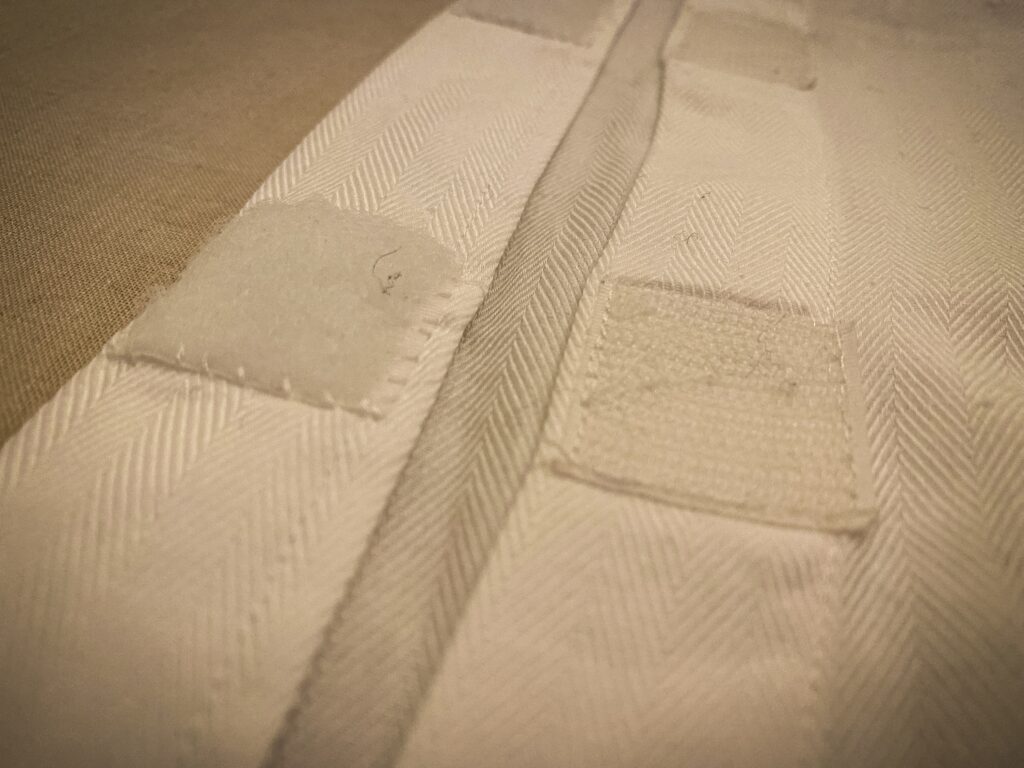
Magnets
Magnets are a favorite closure for quick change “magic”. (Frequently, designers often love to suggest magnets as solutions in their shows during tech). They can be helpful with securing hats to wigs, or in front or back closures in any “remarkably fast” change. Magnets are also decent fixes if an onstage costume “change” has to happen onstage without anyone touching the closure. (i.e. – Twirling out of a skirt or a chorus member pulling away a coat for a reveal). Also, if a quick change involves jewelry, there’s a good chance any closures will be changed to magnets.
Pros
-Easy to match up
-Quick to pull apart
-Easy on hands for people who may have trouble with buttons or snaps.
Cons
-Can stick to themselves if there are multiple magnets on a garment
-Stick to other metal on the set
-Can stick to the barrel of the washer/ cause a mess in the laundry.
As typical in the wardrobe industry, the type of costume quick rigging closure you might pick for your quick change really depends on personal preference. It is up to the wardrobe technician who is responsible for the change to think through the pros and cons of each closure and discuss the possibilities with their supervisor, or their designer if it would affect the look of the clothing.
Read More
An Introduction to the NYC Garment District
Do you have a trick or tip for picking closures for a quick change? Did you find this page helpful for your project? Do you feel like there is a closure that is not on this list but should be? Let us know in the comments!
As I have noted, more information regarding how to use these closures to optimize a costume for a quick change, as well as other quick rigging techniques, is coming soon to The Wardrobe Guide.

